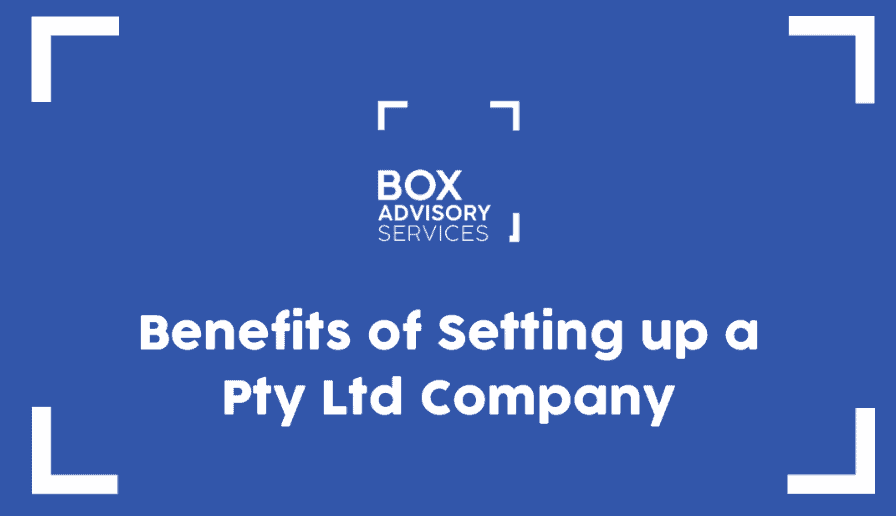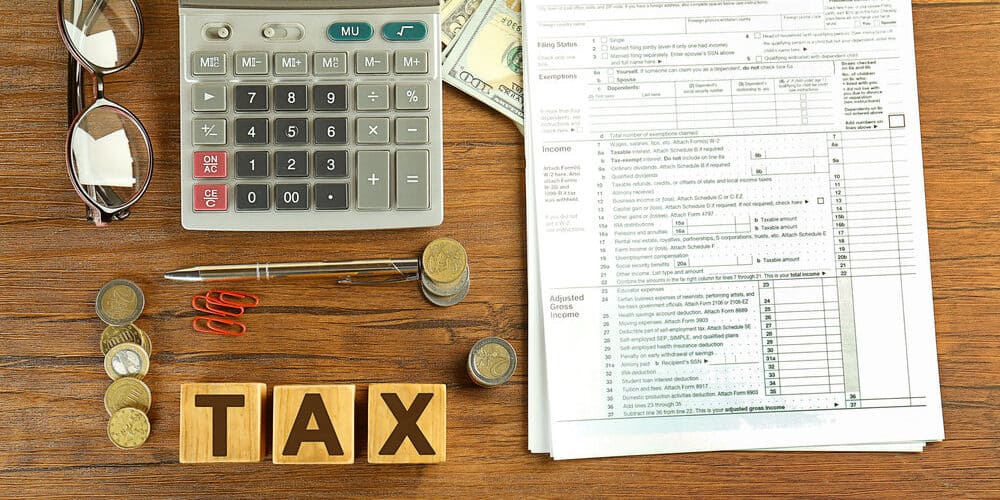
BY
|
What is the Tax-Free Threshold in Australia?
The tax-free threshold is the amount of income an Australian resident can earn in a financial year without paying income tax. For the 2025–26 income year (1 July 2025 to 30 June 2026), this threshold is $18,200.
This means if your total taxable income for the year is $18,200 or less, you will pay zero income tax on that income. The tax-free threshold is legislated and applies automatically to all Australian residents for tax purposes. It resets each financial year on 1 July and is the foundation of Australia’s progressive tax system.
Within the Australian tax system, the tax-free threshold is especially important for low-income and part-time workers, as it helps ensure they are not taxed on their basic earnings.
How the Tax-Free Threshold Works in 2025–26
Australia operates a progressive tax system, where higher income earners pay tax at higher marginal rates. The tax-free threshold anchors this system by ensuring the first $18,200 of everyone’s income is completely tax-free.
Here’s a practical example:
If you earn $35,000 in the 2025–26 financial year, the first $18,200 is tax-free, and you only pay tax on the remaining $16,800 at the applicable marginal rates.
Once your income exceeds the tax-free threshold, you start paying tax on every dollar above $18,200, and you may move into a higher tax bracket, which means a higher percentage of your income is taxed. Your total taxable income determines which tax bracket you fall into, directly affecting your overall tax liability.
Stage 3 Tax Cuts Impact: From 1 July 2024, revised tax rates took effect as part of Stage 3 tax reforms. These changes reduced the 19% rate to 16% and the 32.5% rate to 30%, while lifting key thresholds to $135,000 and $190,000. This means taxpayers above the tax-free threshold now keep more of their income compared to previous years. Knowing how much tax you will pay once you exceed the threshold is important for managing your finances and avoiding surprises at tax time.
2025–26 Tax Rates for Australian Residents
Here are the current individual income tax rates and brackets that apply above the tax-free threshold. For small business owners, understanding these rates is just one aspect to consider when hiring employees, which also involves fulfilling other legal and tax obligations:
| Taxable Income | Tax on This Income |
| $0 – $18,200 | Nil |
| $18,201 – $45,000 | 16c for each $1 over $18,200 |
| $45,001 – $135,000 | $4,288 plus 30c for each $1 over $45,000 |
| $135,001 – $190,000 | $31,288 plus 37c for each $1 over $135,000 |
| $190,001 and over | $51,638 plus 45c for each $1 over $190,000 |
These rates do not include the 2% Medicare levy, which most Australian residents pay on top of income tax.
The amount of tax and the Medicare levy are calculated based on your taxable income and the applicable rates.
Worked Example (2025–26):
Taxable income: $50,000
For personalised advice on your tax situation, book a consultation with our experts. First $18,200: $0 tax (tax-free threshold)
$18,201 to $45,000: ($45,000 – $18,200) × 16% = $4,288
$45,001 to $50,000: ($50,000 – $45,000) × 30% = $1,500
Total tax: $4,288 + $1,500 = $5,788
Plus 2% Medicare levy: $50,000 × 2% = $1,000
Total tax and Medicare levy: $6,788
Who is Eligible for the Tax-Free Threshold?
To claim the full $18,200 tax-free threshold, you must be an Australian resident for tax purposes for the entire financial year (1 July to 30 June). Only individuals who are residents for the full year are eligible for the full tax-free threshold. Australian residents for the full year can claim the full tax-free threshold.
Australian tax residency is determined by various factors, including your permanent home location, intention to stay in Australia, family ties, business and employment connections, and the duration of your stay. Generally, if you reside in Australia, you’re an Australian resident for tax purposes.
Part-Year Residents: If you become or cease being an Australian resident during the financial year, you’re entitled to a pro-rata tax-free threshold. The calculation is:
- $13,464 (base amount)
- Plus up to $4,736 adjusted proportionally for the number of months you were an Australian resident
The pro-rata threshold is based on the period you were an Australian resident and the income paid to you during that time.
For example, if you were a resident for 6 months of the year, your pro-rata threshold would be: $13,464 + ($4,736 × 6/12) = $15,832.
How to Claim the Tax-Free Threshold
To claim the tax-free threshold, complete a Tax File Number Declaration form when starting a new job. On this form, you’ll see a question asking whether you want to claim the tax-free threshold.
Critical Rule: Claim from ONE employer only
When you start your first job, you should claim the tax-free threshold from that employer. If you take a second job, do not claim the threshold again from your second employer. If you are working two jobs, you must only claim the tax-free threshold from one employer to avoid underpaying tax. If you have multiple jobs or income sources, you should only claim the tax-free threshold from your highest-paying employer. Claiming it from multiple employers simultaneously will result in insufficient tax being withheld throughout the year, leading to a tax debt when you lodge your annual return.
For your second and subsequent jobs, answer “No” to claiming the tax-free threshold. Your other employers will then withhold tax from the first dollar you earn at those jobs, helping ensure you pay the correct total tax across all your income sources.
If you claim the threshold from more than one employer, not enough tax will be deducted from your pay, which can result in a tax shortfall at the end of the year. Your employer withholds tax from your pay based on whether you claim the tax-free threshold.
Tip: Since your employer is not aware of your total income from other jobs, it is your responsibility to ensure the tax-free threshold is claimed correctly.
Checklist: Claiming the Tax-Free Threshold
- ☐ Complete TFN Declaration when starting a new job
- ☐ Claim tax-free threshold from your primary (highest-paying) employer only
- ☐ Do not claim from second or additional jobs
- ☐ If you change jobs mid-year, claim from your new primary employer
- ☐ If you forgot to claim, you can still get the benefit when lodging your tax return
- ☐ Each payer (employer) will only know about the income they pay you
Tax Withholding and PAYG: Getting It Right
Pay As You Go (PAYG) withholding is the system where your employer deducts tax from your wages and remits it to the ATO on your behalf. The amount withheld depends on your income level, the tax rates that apply, and whether you’ve claimed the tax-free threshold.
If you have multiple jobs or your circumstances change (such as moving from part-time to full-time), you may need to adjust your withholding to avoid an unexpected bill at tax time. If less tax is withheld from your income, you may owe money when you lodge your tax return. The amount of money you receive in your account each pay period depends on how much tax is withheld. You can complete a PAYG withholding variation application through the ATO and submit it to your employer to increase the amount withheld.
Changing Jobs During the Year: If you change employers during the 2025–26 income year, you can claim the tax-free threshold from your new employer even if you claimed it from your previous employer. Simply complete a new TFN Declaration with your new employer, selecting “Yes” to claim the threshold. Your new employer will calculate withholding based on the payments they make to you, ensuring continuity of the benefit and that you are paying tax at the correct rate throughout the year.
Low Income Tax Offset (LITO) 2025–26
The Low Income Tax Offset (LITO) is a non-refundable tax offset that reduces the amount of tax payable for low- and middle-income earners. For 2025–26, eligible taxpayers can receive up to $700.
LITO Entitlements: For information on property tax benefits and understanding the main residence exemption 6-year rule for CGT, see our comprehensive guide.
| Taxable Income | LITO Amount |
| $37,500 or less | Full $700 |
| $37,501 – $45,000 | $700 minus 5c for each $1 over $37,500 |
| $45,001 – $66,667 | $325 minus 1.5c for each $1 over $45,000 |
| $66,668 and above | Nil |
The offset is non-refundable, meaning it can reduce your tax payable to zero, but you won’t receive any unused portion as a cash refund.
Effective Tax-Free Point:
When you combine the $18,200 tax-free threshold with the maximum $700 LITO, the effective point at which income tax begins is approximately $22,575 (before the 2% Medicare levy applies).
How to Claim:
LITO is applied automatically by the ATO when you lodge your tax return—you don’t need to make a separate claim. The ATO calculates your entitlement based on your total taxable income for the year.
Important: The Low and Middle Income Tax Offset (LMITO) is no longer available for the 2024–25 income year onwards.
Special Considerations for Different Workers
Multiple Jobs
If you work two or more jobs simultaneously, remember to claim the tax-free threshold from one employer only—typically your main or highest-paying job. For all other jobs, you’ll pay tax on the first dollar earned.
While this might seem harsh, it prevents under-withholding across your combined income and protects you from a large tax bill when you lodge your return. Claiming the threshold from more than one job can result in a shortfall in tax paid, which may lead to a tax debt when you lodge your return.
Part-Time and Casual Workers
The tax-free threshold is particularly valuable for part-time and casual workers. If your total annual income is below $18,200, you’ll pay no income tax. However, if your employer has withheld tax from your pay throughout the year, you must lodge a tax return to claim a refund of that withheld tax.
Example: A casual retail worker earning $15,000 per year will have some tax withheld by their employer (if they didn’t claim the tax-free threshold or withholding tables were applied conservatively). When they lodge their return, the ATO will refund that withheld tax because their income is below the $18,200 threshold.
Students Working Part-Time
Students juggling part-time or casual work with their studies benefit significantly from the tax-free threshold. You can earn up to $18,200 per year tax-free, which helps balance study expenses without losing income to tax.
If you’re under 18, you can still claim the tax-free threshold on income from employment. However, be aware that different tax rules apply to unearned income (such as interest or dividends) for minors—these may be taxed at higher rates.
Medicare Levy Surcharge (MLS)
If you’re a higher-income earner without adequate private hospital cover, you may also pay the Medicare Levy Surcharge (MLS) on top of the standard 2% levy.
The MLS is designed to encourage higher earners to take out private health insurance and reduce demand on the public system. Surcharge rates range from 1.0% to 1.5% of your income, depending on your income tier and whether you have an appropriate level of private hospital insurance.
2025–26 MLS Income Thresholds:
| Income Tier (Single) | Income Tier (Family) | MLS Rate |
| $97,000 or less | $194,000 or less | 0% (no surcharge) |
| $97,001 – $113,000 | $194,001 – $226,000 | 1.0% |
| $113,001 – $151,000 | $226,001 – $302,000 | 1.25% |
| $151,001 and above | $302,001 and above | 1.5% |
(Note: Verify current MLS thresholds at ato.gov.au/medicare-levy-surcharge as they are indexed annually)
Tax Offsets and Deductions: Reduce Your Tax Bill
Beyond the tax-free threshold and LITO, there are other ways to reduce your tax liability.
Tax Offsets
These offsets directly reduce the amount of tax you owe, dollar-for-dollar. Examples include:
- Low Income Tax Offset (LITO) – covered above
- Seniors and Pensioners Tax Offset (SAPTO)
- Zone tax offset (for people living in remote areas)
- Spouse superannuation contribution offset
Tax Deductions
Effectively reduce your assessable income, which then lowers the tax calculated on that income. Common deductions include:
- Work-related expenses (uniforms, tools, travel between work sites, self-education directly related to current employment)
- Tax agent fees for preparing and lodging your return
- Charitable donations to registered Deductible Gift Recipients (DGRs)
- Investment property expenses (interest, maintenance, depreciation)
- Managing tax affairs costs
Record-Keeping
To claim deductions, you must keep receipts, invoices, and records that prove you incurred the expense and that it was related to earning your income. The ATO can request evidence for claims made in your return, so it is essential to maintain records for at least 5 years after lodgment.
How to Claim
Include all eligible deductions and offsets when you lodge your tax return (either via myTax in your myGov account, through a registered tax agent, or using compatible tax software). Most offsets are applied automatically by the ATO based on information in your return.
Superannuation and the Tax-Free Threshold
The tax-free threshold applies to your taxable income only—it does not cover employer superannuation contributions.
Superannuation Guarantee (SG) Rate for 2025–26:
From 1 July 2025, the SG rate increased to 12.0%. This is the final step in the legislated increase and means employers must contribute 12% of an eligible employee’s ordinary time earnings to their super fund.
For the 2024–25 financial year (prior to 1 July 2025), the SG rate was 11.5%.
How Super is Taxed:
Employer super contributions are taxed within the super fund at a concessional rate of 15% for most employees. This is separate from your personal income tax and happens before the funds are credited to your super balance.
High-income earners (with income and concessional contributions exceeding $250,000) pay an additional 15% Division 293 tax on some or all of their concessional super contributions, resulting in an effective rate of 30% on that portion.
Super Payment Obligations:
Employers must pay SG contributions at least quarterly by the following due dates for 2025–26 :
- 1 July – 30 September quarter: due 28 October 2025
- 1 October – 31 December quarter: due 28 January 2026
- 1 January – 31 March quarter: due 28 April 2026
- 1 April – 30 June quarter: due 28 July 2026
Understanding how your super is taxed separately from the tax-free threshold helps you plan both your take-home pay and long-term retirement savings.
What to Do Next: Action Steps for 2025–26
For Employees:
- Check your TFN Declaration: Ensure you’ve claimed the tax-free threshold from your primary employer only. If you have multiple jobs, confirm you haven’t claimed it from more than one employer.
- Review your payslips: Check that your employer is withholding the correct amount of tax. If you’re consistently getting large refunds or bills at tax time, consider adjusting your withholding via a PAYG variation.
- Verify super contributions: Confirm your employer is paying 12% SG from 1 July 2025 and contributions are being received by your fund within 28 days of each quarter end.
- Keep records: Maintain receipts and records for any work-related expenses or other deductions you plan to claim.
- Lodge on time: Lodge your 2025–26 tax return by 31 October 2026 (or later if using a registered tax agent) to claim refunds or offsets, even if your income is below $18,200 and you had tax withheld.
For Employers:
- Apply 12% SG rate: From 1 July 2025, calculate and pay superannuation at the new 12% rate for all eligible employees.
- Meet quarterly deadlines: Pay SG contributions by the legislated quarterly due dates to avoid Superannuation Guarantee Charge penalties.
- Update payroll systems: Ensure payroll software reflects the correct 2025–26 tax tables and SG rate.
- Issue payment summaries: Provide employees with their income statement information via Single Touch Payroll (STP) by 14 July 2026.
For Small Business Owners:
- Understand your structure: Sole traders pay individual tax rates with access to offsets; companies pay 25% or 30% depending on base rate entity status. Payroll tax obligations depend on the total wages a business pays in a financial year.
- Maximise deductions: Claim the $20,000 instant asset write-off for eligible asset purchases before 30 June 2026 (subject to legislative extension confirmation).
- Plan for BAS and PAYG instalments: Keep track of quarterly obligations and set aside funds for GST, PAYG withholding, and PAYG instalments.
- Check payroll tax requirements: Review whether your business needs to register for and pay payroll tax based on your total wages. If your wages exceed the annual threshold, you must pay payroll tax.
- Seek advice: Engage a registered tax agent or accountant to optimise your tax position and ensure compliance.
Frequently Asked Questions (FAQs)
1. Can I claim the tax-free threshold if I’m not an Australian resident?
No. The tax-free threshold is only available to Australian residents for tax purposes. Non-residents (foreign residents) pay tax on every dollar of Australian-sourced income from the first dollar, starting at 32.5% for income up to $135,000. Non-residents also do not pay the Medicare levy. Non-residents cannot claim the tax-free threshold and pay tax on every dollar earned in Australia. For information on small business depreciation and tax planning, including the diminishing value method, see our comprehensive guide.
2. What happens if I forget to claim the tax-free threshold from my employer?
If you don’t claim the tax-free threshold on your TFN Declaration, your employer will withhold tax from your entire income at a higher rate (as if you’re not entitled to the threshold). However, you can still receive the benefit of the tax-free threshold when you lodge your annual tax return. The ATO will calculate your correct tax liability, and you’ll receive a refund of any overpaid tax.
3. Do I need to lodge a tax return if I earn less than $18,200?
In most cases, yes, if tax was withheld from your pay. Even though you don’t owe any tax, lodging a return allows the ATO to refund any tax your employer withheld throughout the year. There are some circumstances where you may not need to lodge (such as if you had no tax withheld and no other reporting requirements), but it’s generally advisable to lodge to ensure you receive any refund owed.
4. How does the tax-free threshold work with the Low Income Tax Offset (LITO)?
The tax-free threshold and LITO work together to reduce tax for low-income earners. The $18,200 threshold means you pay no tax on the first $18,200 earned. Then, if your total income is $66,667 or below, LITO reduces your calculated tax by up to $700, effectively raising the point at which you start paying net income tax to approximately $22,575 (before Medicare levy). LITO is applied automatically by the ATO when you lodge your return.
5. Can I claim the tax-free threshold if I’m under 18?
Yes, if you’re earning income from employment (such as a part-time or casual job). The tax-free threshold applies to earned income regardless of age. However, be aware that different tax rules apply to unearned income for minors (such as interest, dividends, or trust distributions), which may be taxed at higher penalty rates. For employment income, the standard tax-free threshold and tax rates apply.
6. How does the tax-free threshold interact with superannuation?
The tax-free threshold applies only to your taxable income reported on your tax return. It does not apply to employer superannuation contributions, which are taxed separately within your super fund at a concessional rate of 15% for most employees. From 1 July 2025, the Superannuation Guarantee rate is 12%, meaning your employer contributes an additional 12% of your ordinary time earnings to your super fund. This super is taxed in the fund, not as part of your personal income tax calculation.
Key Takeaways
- The $18,200 tax-free threshold remains unchanged for 2025–26 and applies to all Australian residents for tax purposes.
- Stage 3 tax cuts (effective 1 July 2024) reduced marginal rates to 16% and 30% for lower brackets, with higher thresholds at $135,000 and $190,000.
- LITO provides up to $700 for eligible taxpayers earning under $66,667, effectively raising the tax-free point to around $22,575.
- Claim the tax-free threshold from one employer only if you have multiple jobs to avoid under-withholding and a year-end tax debt.
- Superannuation Guarantee increased to 12% from 1 July 2025, taxed separately at 15% within your super fund.
- Lodge your return by 31 October 2026 to claim refunds or offsets, even if your income is below the threshold and you had tax withheld.
- Keep detailed records of work-related expenses and consider all available offsets and deductions to minimise your tax liability.
For personalised advice on your tax situation, including how the tax-free threshold, LITO, and deductions apply to your specific circumstances, contact Box Advisory Services or consult a registered tax agent.
Related Resources:
Disclaimer: This article provides general information only. Tax laws are complex and change regularly. Always seek personalised advice from a qualified accountant or registered tax agent for your specific circumstances.



